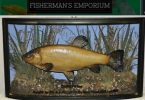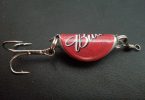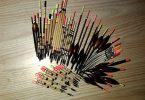• In the document published in 1991 by the UK Sports Council (‘Angling – An Independent Review’), the annual spend by anglers in the UK was calculated at £1.2 billion (£1,200,000,000), excluding VAT (see page 9). This research was based on Angling Foundation’s 1989 socio-economic research using a representative base of about 1,200 anglers.
• The 1994 research commissioned by the NRA (‘National Angling Survey 1994 – Fisheries Technical Report No.5′) concluded that there were 2.9 million freshwater and sea anglers in England & Wales. (If you add Scotland & Northern Ireland, I guess that the UK figure rises to about 3.5+ million.)
• In the same study, NOP estimated that coarse and game anglers in England & Wales spent £3.3 billion (£3,300,000,000) per annum. Clearly, the figure would have been higher had it encompassed Scotland & N.I., as well as sea anglers. (I think that this figure was far too large then; the real figure was probably nearer to £2-3 billion.).
• In its ‘Charter for Angling’ (circa 1996), the Labour Party estimated that the annual spend on angling was £5billion, but I don’t know the source of this nor whether it related to the whole of the UK.
• The ‘Public Attitudes to Angling’ research commissioned by the Environment Agency in 2001 (and reported in 2002) revealed that there were some 3.8 million freshwater anglers in the UK (or 9% of the adult population). A further 8% were ‘very’ or ‘quite’ interested in angling.
• The Drew Report into sea angling in 2003 (reported in 2004) found that some 1.1 million people fished in the sea. Thus, the total UK angling (all types) constituency was said to be approximately 5 million people.
• The EA’s ‘Public Attitudes to Angling’ research was repeated in 2005 and produced roughly the same results as the 2001 work. 8% of the 12+ year-old section of the population were current anglers, and 9% of the population (4.2 million people) had been fishing in the last year. 13% of the population over 12 had fished in freshwater or the sea in the preceding two years (5.8 million people), with 3.5 million of them fishing in fresh water. 10% of the population (4.4 million) were non-anglers who were interested in going fishing.
• There are at least 25 million anglers in Europe (6.5% of the population), and they spend more than 25 billion euros on their sport. This is probably a serious under-estimate, but they are the best figures I have seen, contained in reports by the European Anglers’ Alliance (EAA) and the European Fishing Tackle Trade Association (EFTTA). 2,900 companies trade in fishing tackle within the EU, and this activity supports some 60,000 jobs. The 12,900 tackle shops employ a further 39,000 people.
• In the USA, some 44 million people go fishing (2002 figures). Their economic activity created a nationwide economic activity of about $116 billion, supporting some one million jobs.
• To the best of my knowledge, the most recent figures on angling retail expenditure in the UK were those published by ‘Tackle & Guns’ magazine in December 2006. They indicate that, at retail prices, the UK tackle trade is worth about £515 million, an increase of some 5% since the last survey in 2003. Bait sales alone across all three disciplines totalled £100million.
• Some of this information is repeated in the ‘Salmon & Freshwater Fisheries Review’ (published by MAFF in 2000). There is a useful section on pages 75-77 which is worth reading.
• The economic activity associated with angling is of particular benefit to incoming tourism in rural areas, a fact discussed in the recent 2001 report prepared for the National Assembly For Wales by Nautilus Consultants. This revealed that sea sport fishing in Wales alone generates expenditure of £28 million per annum – much of it in tourism – for species that, commercially, are worth just £3 million.
• The Salmon & Trout Association calculated that the average sum spent by an angler to catch a single Scottish salmon is approximately £500, whereas the same salmon is worth just £20 to a commercial fisherman (2004 figures).
• In a study of the River Spey in Scotland (2004), it was discovered that the fishery is worth £11.8 million and supports 367 jobs. Freshwater fishing (coarse and game) in Scotland brings £113 million annually to the Scottish economy.
• The report Economic Value of Recreational Fisheries in the Nordic Countries, commissioned by the Nordic Council of Ministers, shows that in Finland a total commercial catch of 48 million kg of fish in 1998 was worth FIM 320 million whereas the same catch taken recreationally was worth 1,220 FIM million.
• In Sweden the variance was even greater, with a commercial fish catch of 79 million kg in 1995 being worth SEK 240 million and a smaller recreational catch of 58 million kg in 1999 being worth SEK 2,730 million.
As far as I can discover, the only recent research conducted into the number of jobs and job equivalents provided by angling in the UK was that conducted by the trade magazine ‘Tackle & Guns’. It reported the December 2006 issue.
This showed that they are some 18,250 full-time employees in the angling industry and 5,500 part-time employees. It discovered that there are 2,700 angling outlets, with an average annual turnover of £191,000.
Prepared by: Dr Bruno Broughton, Technical Director, Angling Trades Association
http://www.bruno-broughton.co.uk/
[Latest update: 12th March 2007]








